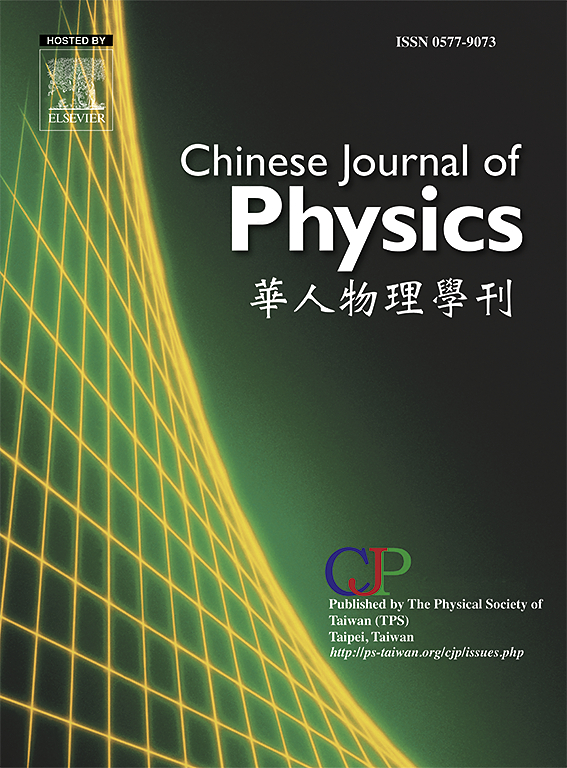MHD flow and heat transfer of nanotriple (Cu–Al2O3–Ag): Exact solutions
IF 4.6
2区 物理与天体物理
Q1 PHYSICS, MULTIDISCIPLINARY
引用次数: 0
Abstract
This work presents an in-depth analytical study of the flow and heat transfer characteristics of a nanotriple fluid system comprising copper, alumina, and silver nanoparticles, over a permeable, elastic, and deformable surface, subject to magnetohydrodynamics (MHD) and velocity slip conditions. Unlike many emerging numerical treatments of water-based nanotriple fluids, the primary objective is to derive exact, closed-form solutions, providing a substantial contribution to the analytical understanding of such complex systems. A unique aspect of this investigation is the identification of multiple algebraic-type solutions for the stretching/shrinking sheet problem, yielding dual solutions under injection and a single solution under suction conditions. In addition, critical numbers are identified as thresholds delineating the boundaries for the existence or absence of solutions. It is found that the number of solutions increases as the magnetic force strength decreases. Dual solutions are observed for both skin friction and thermal gradient in the exponential and algebraic cases. These analytical findings are further reinforced by extensive numerical computations, which offer robust validation of the exact solutions derived. Additionally, stability analysis is carried out in order to determine the stability of solutions, where the first branch demonstrates stability, and the second branch is unstable, highlighting the distinct behaviors within the solution branches.

纳米三重(Cu-Al2O3-Ag) MHD流动和传热:精确解
这项工作对铜、氧化铝和银纳米颗粒组成的纳米三重流体系统的流动和传热特性进行了深入的分析研究,该系统在可渗透、弹性和可变形的表面上,受磁流体动力学(MHD)和速度滑移条件的影响。与许多新兴的水基纳米三重流体的数值处理方法不同,该方法的主要目标是推导出精确的、封闭的解,为分析理解这类复杂系统提供实质性的贡献。该研究的一个独特之处在于确定了拉伸/收缩板问题的多个代数型解,得到了注射条件下的双解和吸力条件下的单解。此外,临界数被确定为描述解存在或不存在的边界的阈值。结果表明,随着磁力强度的减小,溶液的数量增加。在指数和代数情况下,观察到皮肤摩擦和热梯度的对偶解。这些分析结果进一步加强了广泛的数值计算,这提供了准确的解决方案的可靠验证。此外,进行稳定性分析以确定解决方案的稳定性,其中第一个分支显示稳定性,第二个分支不稳定,突出了解决方案分支内的不同行为。
本文章由计算机程序翻译,如有差异,请以英文原文为准。
求助全文
约1分钟内获得全文
求助全文
来源期刊

Chinese Journal of Physics
物理-物理:综合
CiteScore
8.50
自引率
10.00%
发文量
361
审稿时长
44 days
期刊介绍:
The Chinese Journal of Physics publishes important advances in various branches in physics, including statistical and biophysical physics, condensed matter physics, atomic/molecular physics, optics, particle physics and nuclear physics.
The editors welcome manuscripts on:
-General Physics: Statistical and Quantum Mechanics, etc.-
Gravitation and Astrophysics-
Elementary Particles and Fields-
Nuclear Physics-
Atomic, Molecular, and Optical Physics-
Quantum Information and Quantum Computation-
Fluid Dynamics, Nonlinear Dynamics, Chaos, and Complex Networks-
Plasma and Beam Physics-
Condensed Matter: Structure, etc.-
Condensed Matter: Electronic Properties, etc.-
Polymer, Soft Matter, Biological, and Interdisciplinary Physics.
CJP publishes regular research papers, feature articles and review papers.
 求助内容:
求助内容: 应助结果提醒方式:
应助结果提醒方式:


